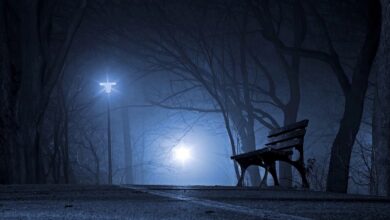How To Explore the Rich Tapestry of American Fiction?

Embark on a literary adventure as we unveil a manual on how to explore the rich tapestry of American fiction. Navigate through the historical roots, iconic authors, and diverse literary movements that have shaped this fascinating narrative landscape. Discover suggestions for delving into modern voices, thematic explorations, and the dynamic intersection of American fiction with different art forms.
Introduction to Rich Tapestry of American Fiction:
American fiction, a literary tapestry woven with the threads of diverse voices, has long been a charming replicate reflecting the complicated narratives of the country. This comprehensive review embarks on an adventure through the annals of American literature, unravelling its historical roots, navigating the diverse literary moves that have shaped its evolution, and thinking of the iconic themes that resonate through the a while.
The Roots of American Fiction:
American fiction, in its nascent levels, observed expression within the works of visionaries like Washington Irving and James Fenimore Cooper. These early pioneers laid the inspiration for a specific literary way of life, exploring subject matters of exploration, identity, and the unfolding American panorama. As the country grew, so did its storytelling, locating its voice inside the transcendental musings of Ralph Waldo Emerson and the introspective wanderings of Henry David Thoreau, who championed individualism and a profound connection with nature.
Literary Movements that Shaped American Fiction
The early 20th century witnessed the flourishing of the Harlem Renaissance, a cultural and literary motion that celebrated the vibrancy of African American voices. Literary giants like Langston Hughes and Zora Neale Hurston emerged, contributing to a rich tapestry of narratives that explored the nuances of the African American revel in. The Lost Generation, marked via disillusionment after World War I, gave upward push to modernist luminaries together with F. Scott Fitzgerald and Ernest Hemingway, shaping a literary landscape characterized through experimentation and a departure from conventional norms.
Architects of American Imagination:
American fiction boasts a constellation of iconic authors, each contributing a completely unique constellation to the literary galaxy. William Faulkner’s complex narratives painted a shiny portrait of the American South, whilst Ernest Hemingway’s spare beauty carved a niche for himself within the realm of literary minimalism. Toni Morrison, a literary masseuse, etched her legacy by means of delving into the complexities of the African American revel in, earning a Nobel Prize for her contributions.
The Evolving Landscape: Contemporary American Fiction
In the latter 1/2 of the twentieth century and past, American fiction has endured to conform, embracing range and increasing its thematic horizons. Multicultural voices, from Jhumpa Lahiri to Chimamanda Ngozi Adichie, have enriched the literary panorama, weaving testimonies that traverse cultural boundaries. Postmodernism has left its indelible mark, with authors like Thomas Pynchon and Don DeLillo challenging conventional storytelling norms.
Themes that Resonate: Exploring the American Psyche
Identity, belonging, and the pursuit of the American Dream are recurrent problems in American fiction. Novels grapple with questions of who we’re as humans and as a country, analyzing the tapestry of several identities that form the American mosaic. Social justice narratives have gained prominence, with authors the use of their pens as gadgets for alternatives, addressing racial inequality, gender discrimination, and different pressing societal problems.
The Role of Genre: Beyond Literary Boundaries
American fiction transcends conventional barriers, venturing into genres like technological understanding fiction, speculative fiction, thriller, and noir. Authors like Ray Bradbury and Philip K. Dick have reshaped our records of reality through the lens of speculative fiction, even as the noir stylings of Raymond Chandler and Dashiell Hammett have solid a shadowy spell over detective fiction.
American Fiction Adaptation:
The popularity of American literature extends beyond the published web page, with many works finding fresh life at the silver screen. Literary adaptations have provided audiences with cinematic gems ranging from the timeless “To Kill a Mockingbird” to F. Scott Fitzgerald’s vast epics “The Great Gatsby.” These adaptations demonstrate the legendary power of narrative across a variety of disciplines.
Criticism and Reception of Literature
The critical reception of American fiction has affected its trajectory, with students and reviewers proposing diverse readings of its diverse works. From early assessments that questioned the authenticity of American literature to modern appraisals that celebrate its cultural impact, the path of American fiction is inextricably linked to the critical discourses that surround it.
American Fiction’s Challenges and Controversies
American literature has faced storms of censorship and controversy, and it has not been without its challenges. The prohibition of publications judged debatable or offensive has sparked disputes about free expression and the limits of creative freedom. Furthermore, recent arguments about diversity and examples highlight the need for a more inclusive literary landscape that includes voices from all walks of life.
Conclusion:
American fiction, a literary fabric spanning centuries and comprising a diverse range of voices, continues to exert a dynamic influence on the cultural and intellectual landscape. The growth of American fiction is a tribute to its durability and adaptability, from the early thoughts of transcendentalists to the postmodern explorations of contemporary authors. As readers continue to delve into its vastness, American literature remains a beacon, leading us through the complexity of the human experience and reflecting the ever-changing shapes of the dominion it strives to grasp.



